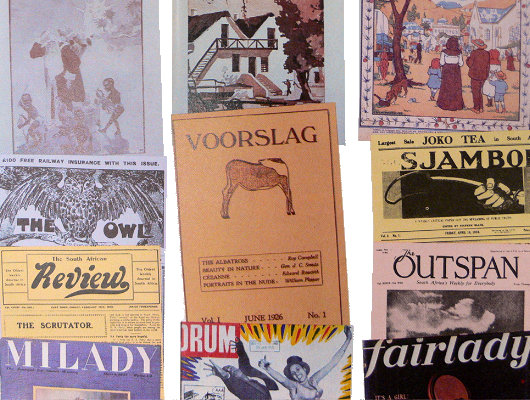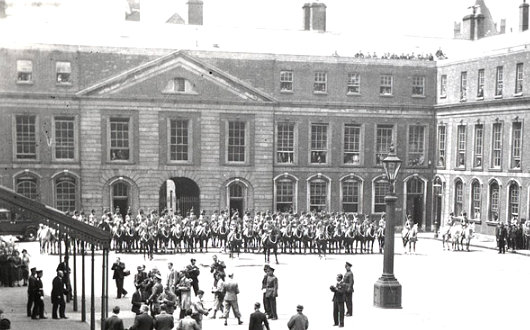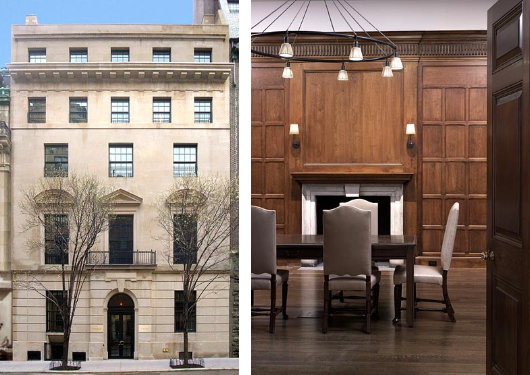2010 April
About Andrew Cusack
 Writer, web designer, etc.; born in New York; educated in Argentina, Scotland, and South Africa; now based in London.
Writer, web designer, etc.; born in New York; educated in Argentina, Scotland, and South Africa; now based in London. read more
News
Blogs
Reviews & Periodicals
Arts & Design
World
France
Mitteleuropa
Knickerbockers
Argentina
The Levant
Africa
Cape of Good Hope
Netherlands
Scandinavia
Québec
India
Muscovy
Germany
Academica
Voorslag

The richness and variety of South African periodicals printed during the first half of the twentieth century can surprise even the most devoted fans of the country. The circumstances at the bottom end of Africa were too particular to be overly influenced by the thought and talk of the imperial metropolis of London, and a miniature South African literary renaissance took place during the 1920s & 30s.
Among the publications one might stumble upon is Voorslag (“Whiplash”), founded by the poet Roy Campbell (who later moved to Spain, converted to Catholicism, and supported Franco during the Spanish Civil War). Campbell had returned to South Africa from England in 1924 in the hopes that his well-to-do relations in Durban might help support the struggling intellectual and his family. After finding financial backers, Campbell (with William Plomer and Laurens van der Post) launched Voorslag two years later in 1926. (more…)
The Blue Hussars
Ireland’s Mounted Presidential Escort

 WHEN BRITAIN FINALLY granted dominion status to Ireland, her longest-held possession, in the 1920s it unfortunately also signalled the end to a long tradition of Irish service in H.M. Forces. Well, this is not entirely true — thousands of Irishmen from both Ulster and the Republic continue to volunteer for the Army, Royal Navy, and RAF (the Royal Irish Regiment and the Irish Guards receiving the lion’s share) with an exemplary record of service to the Crown. But numerous other regiments with long lineages rolled up their colours in a dramatic ceremony at Windsor Castle in 1922. (An aside: one of those five regiments was the Connaught Rangers whose former name — the 88th Regiment of Foot — inspired the later re-designation of a New York Guard unit as the 88th Brigade NYG, of which yours truly is a veteran and my uncle the former commander).
WHEN BRITAIN FINALLY granted dominion status to Ireland, her longest-held possession, in the 1920s it unfortunately also signalled the end to a long tradition of Irish service in H.M. Forces. Well, this is not entirely true — thousands of Irishmen from both Ulster and the Republic continue to volunteer for the Army, Royal Navy, and RAF (the Royal Irish Regiment and the Irish Guards receiving the lion’s share) with an exemplary record of service to the Crown. But numerous other regiments with long lineages rolled up their colours in a dramatic ceremony at Windsor Castle in 1922. (An aside: one of those five regiments was the Connaught Rangers whose former name — the 88th Regiment of Foot — inspired the later re-designation of a New York Guard unit as the 88th Brigade NYG, of which yours truly is a veteran and my uncle the former commander).
The forces which became the Irish Free State Army, given their irregular nature, lacked a ceremonial tradition (though, had I been around and Michael Collins invited me to do so, I would’ve happily manned the desk in the IRA Office of Protocol, Ceremony, and Feathery Hats). In 1932, Dublin hosted the International Eucharistic Congress — a big event in those days, sadly reduced in stature — which meant that dignitaries of great importance would take this opportunity to visit the Irish capital. (more…)
The Institute for the Study of the Ancient World

The Institute for the Study of the Ancient World commissioned Selldorf Architects, previously responsible for the renovation of the Neue Galerie on Fifth Avenue, to restore and upgrade the townhouse at 15 East 85th Street purchased to house the Institute. The house was built in 1899 but altered beyond recognition in 1928 after its purchase by Ogden Mills Reid, editor-in-chief of the New York Herald-Tribune. After the editor’s death, Mrs. Reid sold it to the American Jewish Committee, who used it as their headquarters until its sale to the Leon Levy Foundation, which endowed the creation of the Institute for the Study of the Ancient World at New York University in 2006. (more…)
Search
Instagram: @andcusack
Click here for my Instagram photos.Most Recent Posts
- Silver Jubilee November 21, 2024
- Articles of Note: 11 November 2024 November 11, 2024
- Why do you read? November 5, 2024
- India November 4, 2024
- The Lithe Efficiency of the Old Constitution November 4, 2024
Most Recent Comments
Book Wishlist
Monthly Archives
Categories


